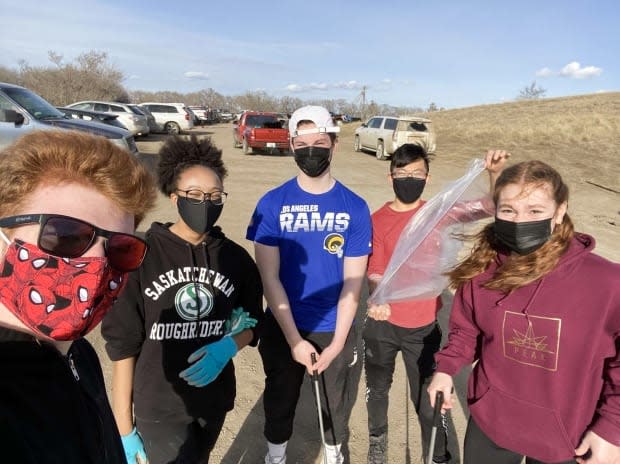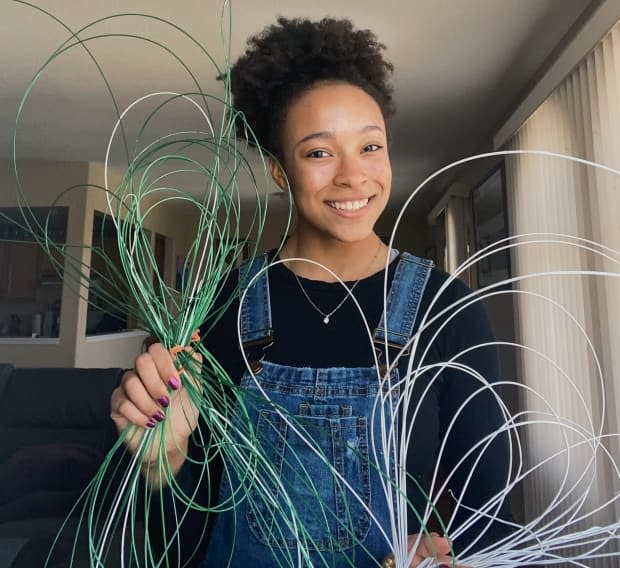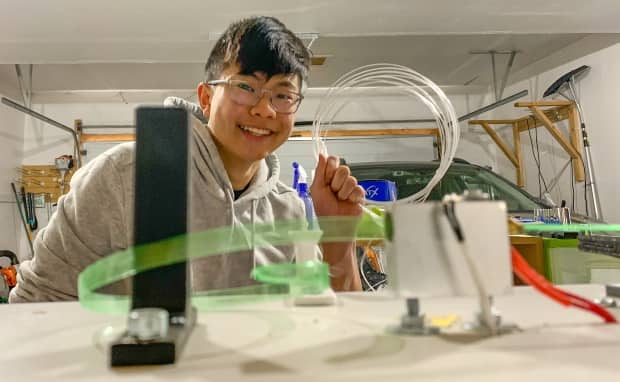Saskatoon youth-led non-profit begins turning plastic bottles into 3D printer material

Two Saskatoon high-school students have started a non-profit that is turning is turning plastic waste into something useful.
Sophia Lacroix and Kai Chen, Grade 11 students at Bishop James Mahoney High School, are using a Russian-built machine to turn plastic bottles into filament for 3D printers, and founded SK Eco Solutions to make the material available at no cost to schools and other educational institutions.
The two students were tired of quarantine last spring and were brainstorming different ideas about things they could do. They landed on "Project PET" (PET stands for polyethylene terephthalate, the plastic used in bottles) and started their non-profit.

"The biggest hurdle we had to get over was finding the machine," Lacroix said.
The extruder they are using is manufactured by NovaTech, a Russian company. After receiving grants from EcoFriendly Sask and the Greater Saskatoon Catholic Schools Foundation, the two were able to purchase a PETBOT machine from the manufacturer.
They're now the second in Canada to have this technology, according to NovaTech. The other one in Canada is in Vancourver.
"We ribbonize them [plastic bottles], we extrude it, and the filament that we get is the filament that feeds directly into 3D printing machines, which has been part of this new wave of technology that tons of arts programs and schools are using," Lacroix said.
The ribbons from the bottles are then converted into filaments and put on a spool that feeds them into the 3D printers. The two hope to donate the filament to schools and other organizations using 3D printers in education.
Lacroix says the first time seeing the machine in-person was shocking, and using it surpassed her expectations. Chen says it took a bit of time to get started.
"It took a lot of trial and error before we actually got some usable filament," Chen said. "But once we got that going, it was pretty amazing to see a plastic bottle turn into something so easily used."

The two are currently getting their supply of plastic bottles from community members, but hope to get more from community associations and groups as Spring cleanups start.
"In the future, we're hoping to have at least 50 per cent of our filament come directly from littered bottles," Chen said.
People might not realize how many are out there, Lacroix says.
Enter quote here - Source
"It's really overwhelming when you see just bags and bags of plastic bottles, which we don't think about too often as being litter. But once you actually go out and search for them, you realize there's a lot more than you could have anticipated," Lacroix said.
"Just driving around the city, we could see just plastic all over the city — bottles, pollution," Chen said. "I think it's really important that we protect our environment and our natural parks that we have in our city just because they're beautiful, we want to keep them."

Lacroix says sometimes people want to do large scale environmental projects but there are also things they can do in just their everyday lives. Lacroix says she hopes people are inspired by their work.
"Overall, we just hope to spark something in other people," she said. "We can inspire other students to not only want to take off this project, but also to find new ways to innovate and reduce plastic waste or their carbon footprint in their own lives."
Chen says he and Lacroix will be leaving Saskatoon for post-secondary education. However, they hope their school's green group will keep the project going.

